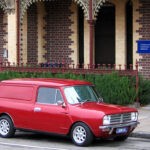5 Common Ford Kuga Faults. Are They Expensive to Fix?
In October 2020, Ford recalled all of its Kuga PHEV across Europe for possible fire risk in the batteries. The problem was caused due to impure battery cells, and they worked to fix it.
While the Kuga doesn’t have any problems in the beginning anymore., owners have reported multiple faults after 100,000 miles.
Today, in this post I will discuss 5 common Ford Kuga faults and learn how expensive they are to fix.
1. Ford Kuga Engine Problems
The Ford Kuga Engine problems are no news. Whether in the UK or the US, if you owned the second-generation Kuga or third-generation Escape, it’s the same. The Kuga has reported multiple overheating faults resulting in engine meltdown or fires.
This problem was mostly seen in the models between 2012-2016, where the engine would overheat to an extent that it breaks down. However, the drivers won’t find out until the vehicle stops itself due to loss of power.
The overheating was caused due to coolant leaks which resulted in the cracking of cylinder heads. The crack caused oil and fuel leaks that due to overheating resulted in engine bay fires. This was seen especially in 1.6L EcoBoost models.
However if your engine didn’t burn due to oil leaks, the overheat resulted in a complete engine meltdown. This was because of Ford’s lack of a proper engine safety system to warn the drivers about the problem.
After multiple reported fires in several Ford Kuga and Escape, Ford had to call their vehicle back multiple times in the UK, US, Australia, and South Africa. While the problem persists till 2017, Ford recalled their vehicles and fixed the problem. As for the others, any such problem would be covered in the warranty.
However, if you are out of warranty and face an engine meltdown, the least you would pay is $10,000. A woman in Australia with a seized engine problem was quoted AUD 20,000 or $14,700 to fix in 2020 for her 2016 Kuga. And guess who didn’t get the warning lights.
Read it: Are Fords Good Cars? (and Models to Avoid)
2. Ford Kuga Battery Problems
The Ford Kuga Battery Problem is another persisting problem that Ford has yet failed to solve. It is just the problem with their PHEV in the UK, but normal models with normal batteries also have shown multiple faults.
For normal battery packs in fuel-powered Kuga, multiple reports of drained batteries were noted. It was seen that despite being fully charged, the batteries would drain in just one day and the car would need a jump start.
However, this particular problem was mostly due to the short lifespan of the installed batteries. The only solution is changing the battery to a better one. A car battery replacement is an easy feat that doesn’t cost more than $100-$150.
But the bigger problem is with the Kuga PHEVs. Due to which Ford had to recall all their PHEVs and stop the production of next-gen plug-in hybrids. The recall was made after four fire reports were made for the Kuga.
When investigated it was found that the battery packs had foreign contaminants in their cell. This caused them to short circuit and overheat making it a potential fire hazard. Since BMW also uses the same supplier they also had to make a recall for their hybrids.
So, to fix the problem, Ford has decided to replace the whole battery pack along with the wirings. The repair process started in December last year while drivers were instructed to drive only in EV Auto or normal mode to reduce stress on the battery.
As Ford is currently working to fix the issues for all their PHEVs, they have also extended the warranty and given a £500 fuel card to the owners for BP fuel stations.
Also read: Are Ford Parts Expensive? (All You Need to Know)
3. Ford Kuga Burning Clutch Problems
The Clutch plates are generally designed to last 60,000 miles. It can be more or less depending on the driving style. But with the Kuga, the clutch plate didn’t just wear out but broke due to pressure. This results in loud thuds and a burning smell from the Ford Kuga clutch.
Often seen in the 1.5 L and 1.6L Ecoboost engine in 2013-2018 Ford Kuga models. The Clutch pressure plates of these vehicles were found cracked. As the pressure plates are one that couples/decouple the engine from the transmission, a worn-out clutch can damage the plates.
But it can also happen due to excess heat and oil leaks to the clutch assembly which was very common to the Kuga models between 2012-2018, which results in clutch slippage and transmission damage.
Replacing clutch pressure plates is done all at once. And since it is in the middle of the clutch it also takes some hard work which makes it expensive. Considering that you replace your pressure plates with a clutch disc and throwout bearing, you can expect to pay upwards of $1000.
4. Ford Kuga Transmission Problems
While the Ford Kuga Ttansmission problem is not as great as the Ford Fiesta or Ford Focus transmission issues, it is annoyingly common in Ford Kuga.
The major issue noticed with the transmission, usually in the 2014 Kuga models, was dual-clutch electronic control failure. The system that controls the automatic transmission fails to shift gear due to computer failure. This is why owners couldn’t move the Kuga forward or backward despite pressing on the accelerator.
A quick solution to that is turning the engine off and then on again to reboot the computer. However, that is only a short-term solution. To fix it permanently it is better to get it repaired. Depending on the damage, a transmission can cost a good $100-$1000 especially if it’s automatic.
The Kuga is also complained to have not-so-durable gear stick and gaiter. The gear stick on the Ford Kuga worn out pretty quickly. Yes, it is not a major issue but it’s an ugly one. Replacing both shouldn’t be more than $50.
Read it: How Long Do Ford Focus Last (& Which Years to Avoid)
5. Ford Kuga Climate Control Problems
The Kuga has also been reported for a faulty heating system. In some Kugas the car heater started to blow cold air. Found especially in the Mark 3 Kugas, the problem can be caused by a bad thermostat or a coolant leak.
Since the air is heated at the heater core where the air passes over hot coolant, if there is less coolant the air won’t heat at all, and the engine won’t cool as well. The heater core itself can also clog and seize to work.
If you have a lack of coolant, it can be fixed by refilling at an average of $100. A coolant leak fix can run around $150-$200. But a bad Heater core can go up to $500 due to its location inside the engine bay.
Certain Ford Kuga models of 2019 and 2020 also faced faults with Fuel operated heaters. The FoH would automatically turn on while the car is parked. If this were to happen in closed space, it can cause injuries or even deaths. Due to which Ford had recalled vehicles facing this fault.
Does Ford Kuga Last Long?
Given all the problems, the Kuga might not feel like the right car to be around for a long time. However, the Kuga has some good reliability ratings. Yes, they are not as durable as any Honda or Toyota. But they are fun to ride SUVs that are designed to be a perfect fit for a family.
While the Kuga surely has consecutive years of backlashes, people are still buying it. That’s because it is a decent car made to last a good 150,000 miles. Also whatever problems it had, Ford has worked greatly to fix those.
Any Kuga after 2019 doesn’t face such issues. For better durability, Ford recommended maintenance at 10,000 miles for full service and 5000 miles for interim service. So annual maintenance of the Kuga is good enough to make it last longer.
Is Ford Kuga the best Ford for the money? Or are there any more affordable Fords? You can find it out here.
What are the Best Alternatives for Ford Kuga?
The Ford Kuga has a lot of competition in the market from brands that didn’t have fire issues. In 2021 particularly, you have options like the Subaru Forester, Mazda CX-5, and Chevrolet Equinox. All these cars have better overall scores than the Kuga and offer better value for money.
What Ford Kuga Engine is the Best?
The Kuga today have Petrol, Diesel, and PHEVs but the best engines are the ones from the second-gen. The diesel-powered 1.6 L TDCi engine or the enhanced 1.5L TDCi engine are good and reliable options to consider. Being diesel engines they have better fuel economy and are a good fit for an SUV.
One can consider the 2.0 L TDCi for long-distance traveling or carrying loads.
Is Ford Kuga Overall a Reliable Car?
The Ford Kuga is a reliable car with a 4/5 stars rating and ranks 44/100. It might have had a few problems before, but after Ford recalls, the Kuga is performing pretty well. Also, the current-gen Ford Kuga shares no such problems and is considered a great buy for a family SUV.
Among all Kuga models, the Titanium X sport is the one with the best spec list while the ST line is the sexiest and fun to drive Kuga you can buy.






